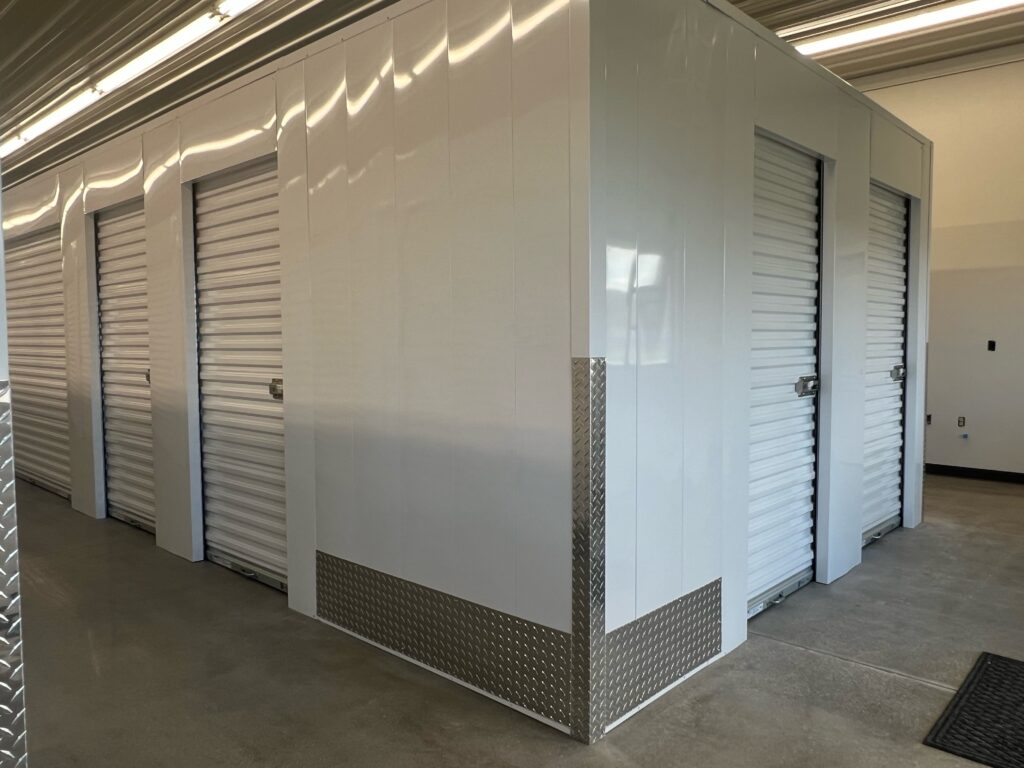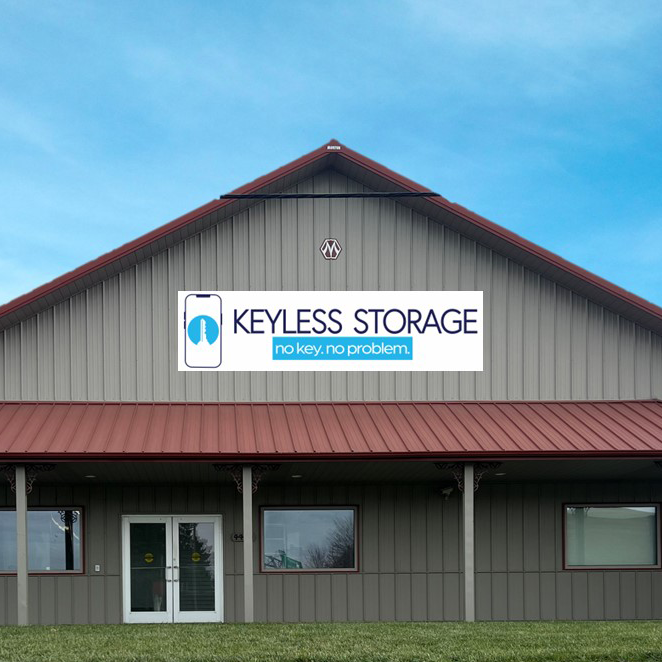High Security Storage Units: 12 Features That Matter Most
Choosing a storage unit shouldn’t mean crossing your fingers and hoping your things are still there next week. When you’re putting valuables, business inventory, or family keepsakes behind a roll-up door, security is the whole point—yet not all facilities protect them the same way. Cameras without monitoring, weak locks, dim lighting, or poor construction create gaps thieves (and disasters) can exploit. If you’re comparing high security storage units near you, the challenge is knowing which features actually reduce risk—and which are just marketing.
This guide cuts through the noise. We’ll show you the 12 security features that matter most, from keyless smartphone access with 24/7 control to full-height walls, climate and humidity management, and real-time surveillance. For each item, you’ll get a quick explanation of what it is, why it matters, and the specific details to verify before you rent—online or on a site visit. Use this checklist to spot real protection, avoid costly compromises, and choose a facility that delivers peace of mind along with convenience.
1. Keyless smartphone access with 24/7 control (Keyless Storage)
What it is
App-based entry replaces keys and shared PINs. Your phone’s Bluetooth opens the gate, building doors, and your unit—no keys to carry, copy, or lose. At Keyless Storage, it’s standard 24/7.
Why it matters
Keys get copied and codes get shared; phones don’t. Real-time control reduces tailgating and ends the “who has the key?” problem—critical for high security storage units.
What to look for
Confirm the system is truly secure and convenient.
- Encrypted mobile credentials: Prefer apps with optional two-factor authentication.
- Offline-capable Bluetooth: Doors open even without cell signal.
- Unified access: One app controls gate, building, and unit doors.
- Granular sharing: Temporary access you can share and revoke; 24/7 policy in writing.
2. Gated perimeter and building access controls
What it is
Layered access starts at the perimeter—fencing and a motorized gate—and continues at building entrances and elevators. Tenants use unique PINs or mobile credentials; every entry is recorded.
Why it matters
Many incidents begin with unauthorized drive‑ins or walk‑ins. Controlled gates and doors restrict movement to authorized areas and create an audit trail that deters misuse and speeds response.
What to look for
On site, verify access is truly layered and auditable.
- Perimeter fence + single gate: Keypad or app-controlled.
- Credentialed building doors: Floor-restricted elevators.
- Unique, logged credentials: Individual PINs/mobile credentials; revocable sharing.
- Cameras + backup power: Gate/door views; gates work during outages.
3. Individually alarmed units and door sensors
What it is
Magnetic contacts or smart door sensors arm each unit. If a door opens without a valid credential event (PIN/app), the alarm trips and the incident is logged. Some facilities configure alarms to sound locally or alert monitoring teams instantly.
Why it matters
In shared facilities, one breach can blend in. Unit-level alarms turn every door into a tripwire, stopping piggybacking and prompting immediate staff action. For high security storage units, per-door alarms are non-negotiable.
What to look for
Verify alarms are integrated and monitored.
- Linked to credentials: Per‑unit sensors tied to your access use.
- Actionable alerts: Audible or monitored alarms with staff response.
- Auditability: Real‑time event logs available on request.
- Tamper resistance: Door/latch tamper sensing; fast alarm reset by staff.
4. 24/7 HD video surveillance and active monitoring
What it is
A network of HD cameras records the entire property around the clock. Footage is actively watched or alerts are generated in real time, and incidents can be reviewed and shared with law enforcement. The best systems link video to access events and unit alarms.
Why it matters
Visible, always‑on surveillance deters crime and speeds response when something looks off. When video is tied to credential logs and door sensors, you get proof of who entered, when, and where—exactly what high security storage units require.
What to look for
Confirm the system does more than just record.
- Comprehensive coverage: Gates, building doors, interior hallways, elevators, and loading areas.
- Clear, low‑light video: HD clarity with night vision and wide dynamic range.
- Active monitoring: Live oversight or automated alerts tied to access/alarm events.
- Searchable retention: Time‑stamped footage stored securely with an auditable access log.
5. High-security locks and tamper-resistant hardware
What it is
High-security locking relies on stronger locks and smarter door hardware. Disc locks and in‑door cylinder locks are common in high security storage units; cylinder locks are integrated into the door, reducing exposed hardware. Recessed hasps and tamper‑resistant latches further limit tool access.
Why it matters
Cheap padlocks expose a shackle bolt cutters target. Disc locks are harder to cut, and cylinder locks minimize grip points, making prying attempts riskier and more detectable—closing one of the most common break‑in methods.
What to look for
Verify the hardware, not just the lock.
- Disc or cylinder lock: Purpose‑built, not thin‑shackle padlocks.
- Recessed/shrouded hasp: Blocks cutters and prybars.
- Hardened latch/anti‑pry plates: Reinforced strike area and tight fit.
- Weather‑resistant build: Corrosion‑resistant materials to prevent lockouts.
6. Solid unit construction and full-height walls
What it is
Units built with rigid materials and partitions that extend to the roof/deck, plus reinforced frames and tight‑fitting doors that minimize gaps.
Why it matters
Thieves exploit gaps above walls or flimsy partitions to step over or cut through. Solid, full‑height construction blocks pass‑through, resists prying, and prevents incidents from spreading to neighboring units—essential for high security storage units.
What to look for
On a tour, do a quick build check.
- Full‑height walls: To the deck; no open gap or mesh.
- Rigid materials: Heavy‑gauge steel or masonry with tight seams.
- Reinforced door frames: Recessed hardware and strengthened jambs.
- Ceiling protection: Solid lid or deck‑to‑deck partitions above interior units.
- No exposed fasteners: Nothing accessible from corridors.
7. Bright, uniform LED lighting inside and out
What it is
LED fixtures deliver bright, even lighting across the property—perimeter, gates, entrances, halls, elevators, stairs, and loading zones. Consistent light reduces shadows and keeps sightlines clear at all hours.
Why it matters
Good lighting deters trespassers, helps people spot hazards, and makes after‑hours access safer. It also sharpens camera footage—vital for high security storage units when identification and response speed matter.
What to look for
During a tour, check for:
- Uniform coverage: Even lighting; no dark corners.
- Keypad/camera lighting: Lit gates, doors, loading zones.
- Smart controls: Dusk‑to‑dawn outside; motion indoors.
- Backup readiness: Emergency power for key areas.
8. Fire, water, and disaster protection systems
What it is
Fire, water, and disaster protection covers how a facility prevents, detects, and responds to fires, leaks, and severe weather. In high security storage units, these layers work with access control and video to contain incidents quickly and preserve evidence.
Why it matters
Small leaks ruin files; storms expose aisles. Facilities with round‑the‑clock monitoring, clear procedures, and tenant policies reduce damage. Required storage insurance helps cover losses from fire, water damage, or other disasters when the unexpected happens.
What to look for
- Documented inspections and maintenance: Routine walkthroughs with fast repairs.
- Staff readiness: On‑site presence or on‑call teams; posted emergency procedures.
- Indoor, climate‑controlled buildings: Extra protection from weather exposure.
- Incident documentation: Video retention and clear claims/reporting with required insurance.
9. Climate control and humidity management
What it is
Climate control keeps indoor storage within a narrow temperature band and actively manages moisture year‑round. Most quality facilities maintain units roughly between 55–80°F and use dehumidification, sensors, and automated HVAC to stabilize conditions across seasons.
Why it matters
Heat, cold, and humidity warp wood, ruin photos and documents, corrode electronics, and invite mold. Stable temperature and moisture levels preserve delicate materials—and because climate units are usually inside secured buildings, you also gain an extra barrier against weather and intruders in high security storage units.
What to look for
Ask how the environment is maintained, monitored, and verified—not just advertised.
- Published temp range: Typically near 55–80°F.
- Active humidity control: Dehumidification plus calibrated sensors.
- Indoor, secured building: Tight seals and controlled access.
- Routine checks: Documented inspections and maintenance logs.
10. On-site staff presence and routine patrols
What it is
On-site managers and trained staff are present daily and circulate the property. They run scheduled walkthroughs of gates, halls, elevators, and loading areas, verify access events, and coordinate maintenance.
Why it matters
Visible staff deter trespassers and stop tailgating—a powerful layer for high security storage units. When alarms or odd access occur, they respond fast—review video, secure areas, and call police if needed to prevent bigger losses.
What to look for
Ask how people—not just cameras—protect the site, day and night.
- Staffed office or resident manager
- Documented patrols and incident reports
- Defined alarm-response time and after-hours escalation
11. Pest control and clean, well-maintained grounds
What it is
Integrated pest prevention plus rigorous housekeeping. Expect scheduled treatments, sealed gaps/door sweeps, tidy landscaping, and routine cleaning in corridors and loading zones to remove food sources and nesting spots.
Why it matters
Pests chew wiring, contaminate goods, and invite mold; clutter hides problems. Clean, well‑maintained sites with routine inspections and preventative pest control—common at top facilities—spot issues early, a must for high security storage units.
What to look for
- Professional program: Documented schedule and service logs.
- Housekeeping: Clean, clutter‑free halls; dumpsters and loading areas tidy.
- Sealed envelope: Door sweeps, thresholds, and closed wall/ceiling seams.
- Dry grounds: No standing water; trimmed, well‑lit landscaping.
12. Insurance requirements and tenant account security
What it is
Tenant insurance covers stored items for events like theft, fire, and water damage—many reputable facilities require it at move‑in or verify your homeowner/renter coverage. Tenant account security governs your login, billing, and any app‑based access you share to the unit, including who can open doors and when.
Why it matters
Insurance limits financial loss when the unexpected happens. And with keyless systems, your account is effectively a key: if credentials are compromised, someone could enter your unit or make charges before you notice. For high security storage units, both protections are non‑negotiable.
What to look for
Verify both policy details and digital safeguards. Ask to see how incidents are documented and how quickly you can lock down access if needed.
- Insurance in writing: Proof of requirement or accepted homeowner/renter coverage; clear perils and limits.
- Claims support: Straightforward process and incident logs (video + access events) available on request.
- Account hardening: Strong passwords plus optional two‑factor authentication.
- Access controls: Revocable sharing, sign‑in/door‑event alerts, and encrypted online payments.
Final thoughts
High security storage isn’t one gadget—it’s a layered system that closes gaps before problems start. Use this 12‑point checklist to move from guessing to knowing: verify access control, alarms, cameras, construction, lighting, climate, maintenance, staff presence, and insurance/account safeguards. Tour in person, ask how each layer is monitored, and only rent when you can see evidence, not just promises.
If you’re in Sioux City and want these protections with modern convenience, consider Keyless Storage. You’ll get smartphone entry with 24/7 access, 100% climate‑controlled, ground‑floor units, and continuous video coverage—plus fast online rental and account control. Reserve a unit or join the waitlist in minutes and store with confidence that lasts beyond move‑in day.



